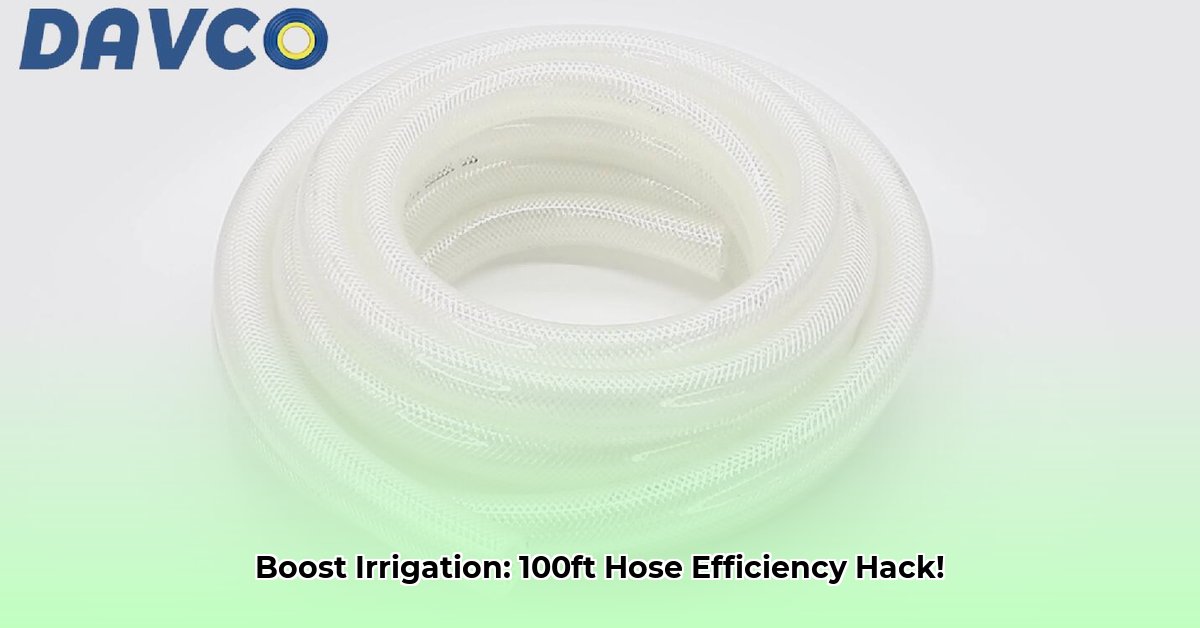
Choosing the Right 100-Foot Hose for Your Needs
Watering large areas can be time-consuming and inefficient. A 100-foot water hose from Tractor Supply offers a solution, but selecting the right one is crucial. Consider these factors:
Hose Material: Rubber hoses are durable and kink-resistant, ideal for rough terrain. PVC hoses are cheaper but may be more prone to damage. Which material best suits your farm's conditions?
Water Pressure: Longer hoses increase friction, reducing water flow. Ensure your water source provides sufficient pressure; otherwise, a weak spray negates the hose's benefits. A pressure booster might be necessary. Do you know your current water pressure?
Hose Diameter: A larger diameter reduces pressure loss, resulting in stronger, more consistent water flow, especially over long distances. While initially more expensive, the long-term savings in water and time are significant. What's the optimal diameter for your irrigation needs?
Check out these helpful yard wagons for easier hose transport.
Maximizing Your 100-Foot Hose: Tips and Techniques for Efficient Irrigation
Investing in a quality hose is only part of the equation. Efficient use ensures you get the most from your purchase and minimize water waste.
Strategic Hose Placement: Methodically water sections, avoiding unnecessary hose movement and water runoff. Think of it like painting – you wouldn't cover an entire wall with one stroke.
Regular Maintenance: Regularly inspect for leaks, cracks, or kinks. Promptly address minor issues to prevent larger problems and water loss. A small leak can waste gallons over time.
Smart Watering Practices: Utilize soaker hoses or drip irrigation systems for targeted watering, minimizing water evaporation and delivering water directly to plant roots. This targeted approach conserves water.
Proper Storage: Coil your hose carefully after use to prevent kinks and extend its lifespan. A hose reel is a valuable investment for organization and protection.
Troubleshooting Common 100-Foot Hose Problems
Even with careful use, issues can arise. Here's how to address common problems:
- Kinks: Prevent kinks by avoiding sharp bends and choosing a kink-resistant hose. Gently curve the hose around obstacles.
- Low Water Pressure: Check for kinks or blockages in the hose and ensure adequate pressure at the water source. A pressure booster may be necessary.
- Leaks: Repair or replace damaged sections as soon as leaks appear to minimize water waste.
Sustainable Irrigation: Conserving Water with Your 100-Foot Hose
Water conservation is paramount in agriculture. A 100-foot hose, while beneficial, requires mindful use to maximize its efficiency and minimize water waste.
Understanding Your Water System's Capacity
Before deploying your hose, assess your water pressure. Insufficient pressure renders a long hose inefficient. Regularly monitor your water pressure to ensure optimal performance.
Optimizing Hose Placement and Watering Techniques
Strategic placement is key. Avoid watering areas where plants don't need water. Concentrate your efforts on the zones requiring hydration. This targeted approach saves water and energy.
Advanced Water-Saving Techniques
Mulching: Use mulch to help retain soil moisture reducing the need for frequent watering. This synergistic approach leverages the hose's range effectively.
Time-Based Watering: Employ a timer to prevent overwatering, a common cause of water waste. Precise control minimizes water consumption.
Nozzle Selection: Select nozzles that deliver a gentle, controlled spray, maximizing water delivery to the plants and minimizing evaporation.
Is a 100-Foot Hose Right for You?
A 100-foot hose from Tractor Supply offers several advantages: extended reach, time savings, and potentially lower labor costs. However, consider these factors:
| Advantages | Disadvantages |
|---|---|
| Increased watering range | Requires sufficient water pressure |
| Reduced time and effort for irrigation | Potential for kinks and damage |
| Cost-effective for larger areas | Higher initial investment than shorter hoses |
| Environmentally friendly (reduced repositioning) | Requires proper storage and maintenance |
By carefully considering your specific needs and implementing the tips outlined in this guide, you can harness the power of a 100-foot water hose to improve your irrigation efficiency and minimize water waste, fostering a more sustainable farming practice.